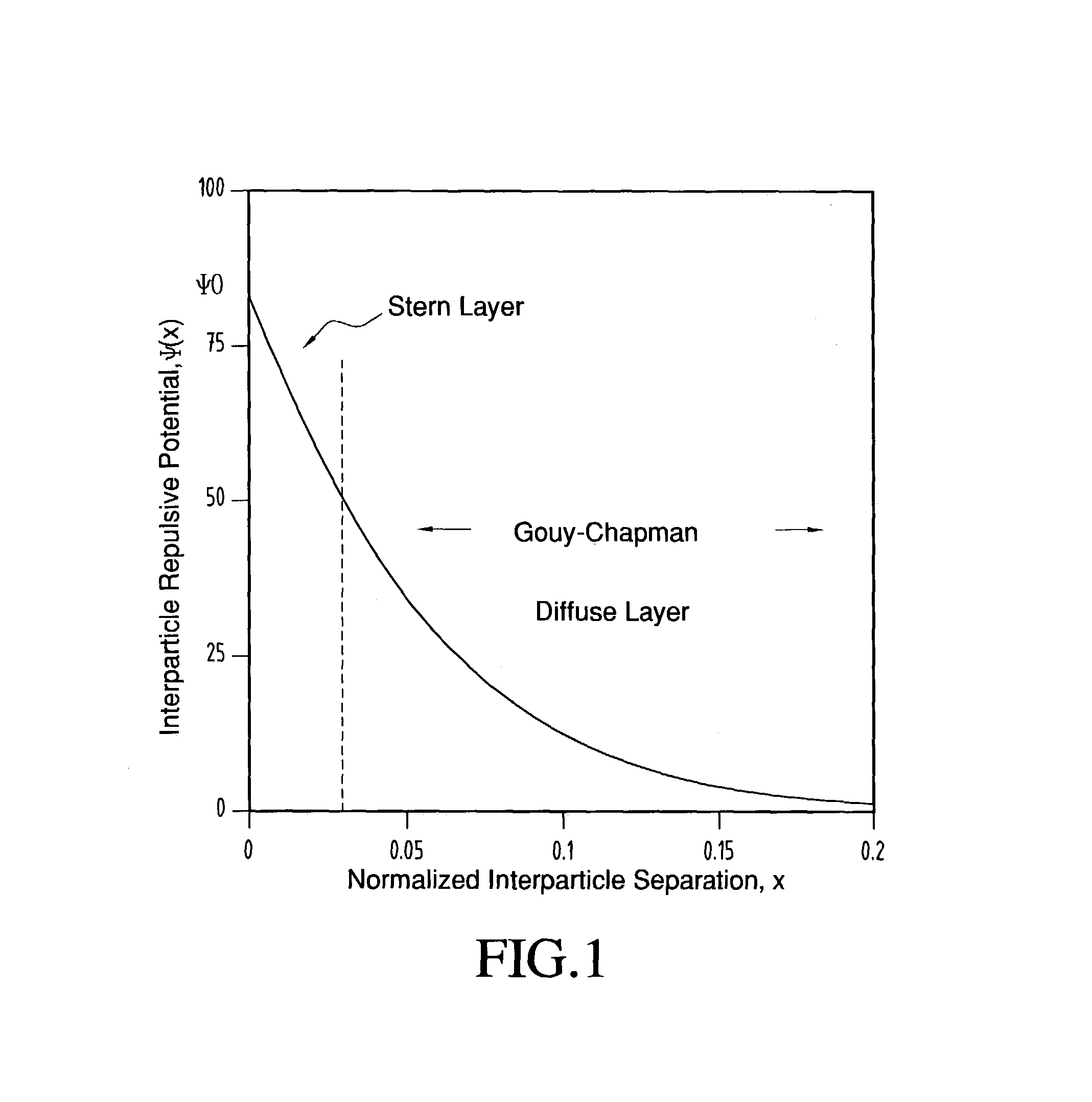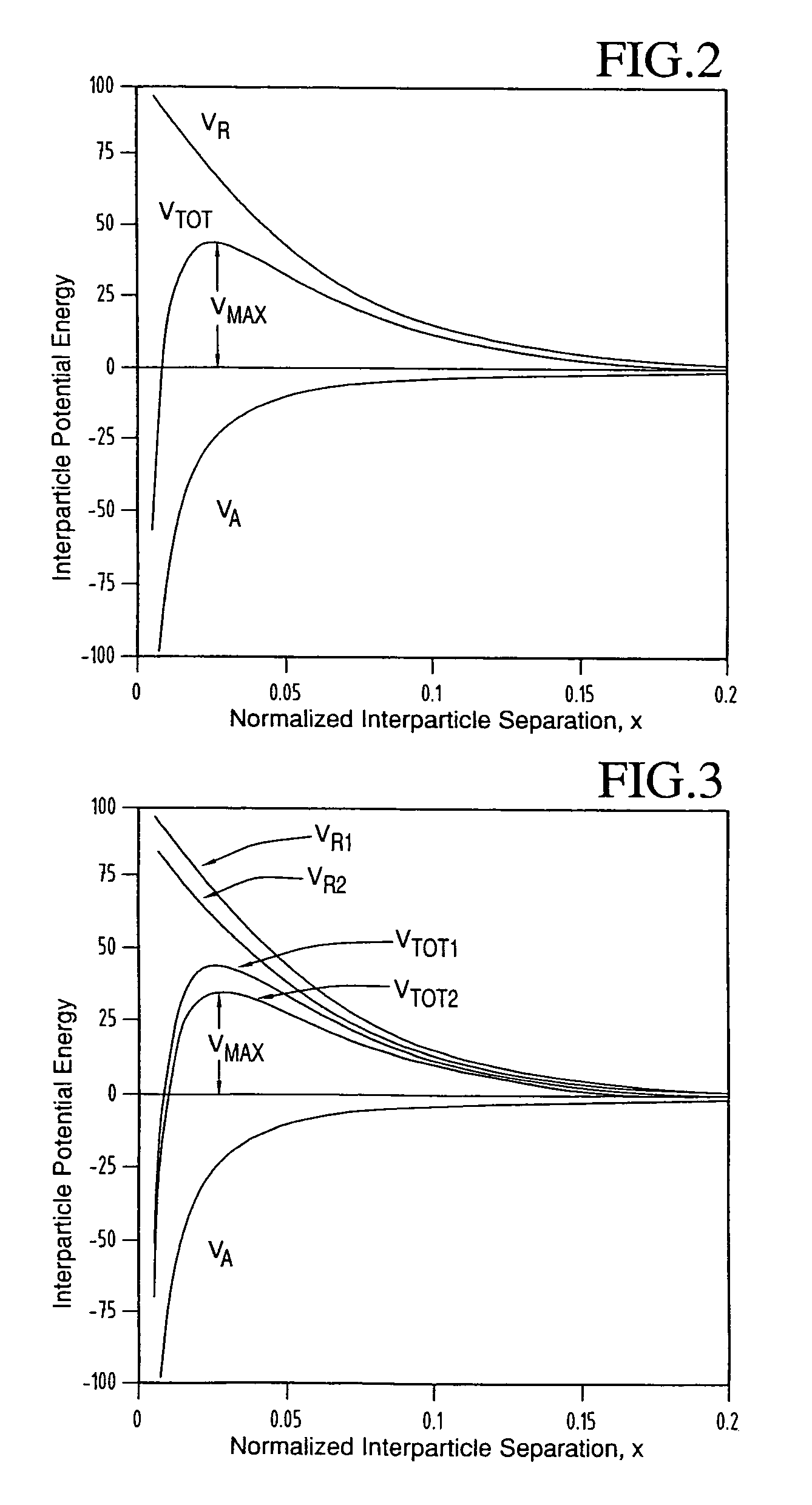Stability assessment of dispersions and emulsions
- Summary
- Abstract
- Description
- Claims
- Application Information
AI Technical Summary
Benefits of technology
Problems solved by technology
Method used
Image
Examples
first embodiment
[0149]the method of this invention, shown schematically in FIG. 19, utilizes stress factor “A,” consisting of controlled alteration of the pH—i.e., involving either an increase or a decrease in the pH of the continuous phase of the dispersion or emulsion in question. In this embodiment, stressing of the starting sample by means of changing its pH causes the average amount of charge on the surfaces of the particles (or droplets) to decrease, resulting in a reduction in the interparticle potential energy barrier height, VMAX, and a consequent acceleration in the rate of irreversible agglomeration of neighboring particles (or coalescence of neighboring droplets). The choice of whether to increase or decrease the pH of the sample depends on whether the particles (or droplets) carry a net negative or positive charge in their normal, unperturbed state. If the pH of the unperturbed dispersion is greater than the “isoelectric point,” or IEP (i.e., the pH value at which the charge on the par...
second embodiment
[0164]There are two choices that must be made in implementing the second embodiment for accelerated stress testing of the dispersion or emulsion of interest. First, a suitable electrolyte must be selected—i.e., one that, after dissociation, provides ions that are adsorbed to a significant extent by the surfaces of the oppositely charged particles / droplets. In the case of the stress tests performed on the milk samples, discussed above, calcium chloride proved to be a good choice for the electrolyte, as the dissociated Ca++ ions obviously have an affinity for the (bovine) casein-coated fat droplets comprising the dispersed phase of whole milk. Typically, a variety of electrolytes are suitable candidates for stressing dispersions of interest, providing ions that adsorb to some extent onto the charged particles / droplets. A second choice that must be made, of course, is the appropriate range of concentration for the added electrolyte, once the latter has been selected. Estimates can be m...
third embodiment
[0171]There are, again, two choices that must be made in implementing the First, a suitable salt must be selected—i.e., one that, after dissociation, provides ions that remain in the aqueous phase of the dispersion under study, largely not adsorbed onto the surfaces of the oppositely charged particles / droplets. (The effectiveness of the dissociated salt ions to shrink the thickness of the electrical double layers associated with each charged particle is also highly dependent on the valence of the ions, as taught by the Debye-Hückel theory.) In the case of the stress tests performed on the vegetable oil emulsion (plus mixed ionic species) discussed above, sodium chloride proved to be a good choice for the added salt. The second choice involves the appropriate range of concentration for the added salt. Again, estimates can be made using DLVO theory. However, typically the range of suitable concentrations is established by trial and error, through stress testing of the dispersion of i...
PUM
 Login to View More
Login to View More Abstract
Description
Claims
Application Information
 Login to View More
Login to View More - R&D
- Intellectual Property
- Life Sciences
- Materials
- Tech Scout
- Unparalleled Data Quality
- Higher Quality Content
- 60% Fewer Hallucinations
Browse by: Latest US Patents, China's latest patents, Technical Efficacy Thesaurus, Application Domain, Technology Topic, Popular Technical Reports.
© 2025 PatSnap. All rights reserved.Legal|Privacy policy|Modern Slavery Act Transparency Statement|Sitemap|About US| Contact US: help@patsnap.com



